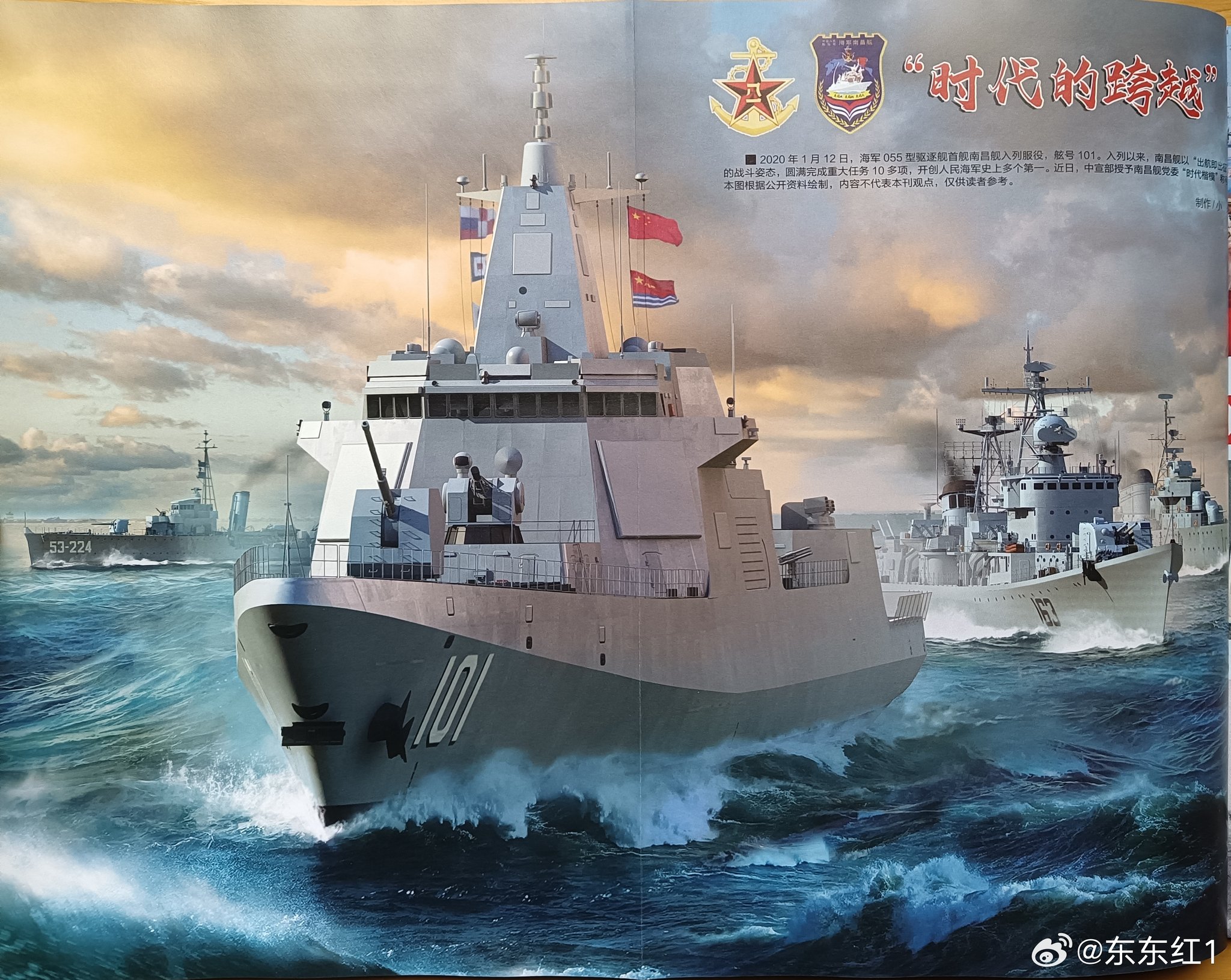The U.S. Navy’s strategy to “field multiple thousands of all-domain, attritable autonomous systems to warfighters by August of 2025″ is well on track, according to U.S. Navy Captain Alex Campbell.
The Hellscape strategy focuses on a simple rule: Should China try invading Taiwan, the PLA will encounter a formidable drone force designed to render them “miserable” and buy time for the U.S. forces to sort its logistics, set up bases, and retaliate.
Meanwhile, China is formulating its own strategies to counter the US.
In a simulated naval combat scenario near the coast of Taiwan, Chinese scientists claim that their advanced Type 055 destroyer could stand firm against an oncoming US fleet by deploying a sophisticated network of unmanned systems, dubbed the “kill web.”
The exercise, conducted by the China Ship Development and Design Centre (CSDDC) in collaboration with Huazhong University of Science and Technology, was set in the Western Pacific, just hundreds of kilometers east of Taiwan, according to reports in Chinese media.
During this simulation, a single Type 055 destroyer faced off against eight US Arleigh Burke-class destroyers, an imposing force in its own right. The Chinese warship was supported by two unmanned motherships, which released 32 drones and 14 unmanned boats to bolster its defenses.
The US fleet launched 32 advanced Tomahawk and LRASM stealth anti-ship missiles at Type 055, each costing over US$3 million. However, the unmanned systems, designed to work in tandem with the destroyer, detected and countered the attack.

The Chinese media report claimed that following the simulation, the Chinese warship remained “unscathed,” and the unmanned boats retained enough ammunition to fend off any subsequent strikes.
The exercise, which highlights China’s ambition to reshape naval warfare through large-scale use of unmanned platforms, demonstrated the potential of its “kill web” concept.
The Chinese research team argued that this network would help the People’s Liberation Army (PLA) rapidly and precisely neutralize enemy threats, offering China an asymmetrical advantage in naval conflict.
In the event of a conflict over Taiwan—an island Beijing considers a breakaway province—China’s ability to counter high-cost US weaponry with its own low-cost, mass-produced drones could change the dynamics of military engagement in the region.
AI expert Professor Yu Minghui, a lead researcher in the study, provided rare insights into the operational costs of China’s unmanned systems. The Small unmanned boats used in the simulation are equipped with short- and medium-range missiles.
Though not cheap, they are significantly less expensive than their American counterparts, such as the RIM-116 and SM-2 missiles, which range from US$1 million to US$2.4 million.
According to the researchers, the total cost of intercepting the 32 US missiles in the simulation would fall between 160 million yuan and 270 million yuan (roughly US$22 million to US$37 million), a fraction of the cost of deploying equivalent US missile defense.
Chinese researchers asserted that their simulation only scratched the surface of the kill web’s full potential, which could include military satellites, manned fighter jets, early-warning aircraft, and submarines.
Each platform in the network plays multiple roles, and the system’s interconnectedness ensures that even if one unit fails, the strike capability remains intact.
Type 055 Renhai-Class Destroyer
The Type 055 Renhai-class guided-missile cruisers of the People’s Liberation Army Navy (PLAN) are considered some of the most powerful warships in service today, playing a key role in projecting China’s naval dominance.
The construction of the first cruiser in this class, the Nanchang, began in 2014. Launched in 2017, it entered active service in January 2020.
Since its commissioning, the Nanchang has traveled over 110,000 nautical miles and participated in multiple operations, including a journey to the Bering Sea, combat missions in the Pacific Ocean, and exercises in the Xisha and Nansha regions of the South China Sea.
During its service, the ship successfully completed more than ten major missions, including escorting the aircraft carrier Liaoning near Taiwan in April 2021.
According to the Chinese media, it was also involved in the China-Russia Joint Sea-2021 exercise in October 2021 and countered disruptions from foreign aircraft carrier groups during a training mission in the West Pacific in 2022.

In addition to Nanchang, seven more Type 055 destroyers have joined the PLA Navy, further strengthening China’s naval capabilities.
Each Type 055 is equipped with 112 universal vertical launch system (VLS) missile tubes arranged in an 8×8 front configuration and a 6×8 rear configuration.
These launchers are designed to carry a mix of HHQ-9B surface-to-air missiles, with a range exceeding 100 nautical miles, and YJ-18 anti-ship cruise missiles, which can strike targets up to 290 nautical miles away.
The large VLS tubes could also potentially house anti-submarine missiles or even land-attack cruise missiles and anti-ship ballistic missiles in the future.
The Type 055’s combat capabilities would be further enhanced if paired with advanced unmanned vehicles. The ships themselves are 591 feet long, with a 66-foot beam and a 22-foot draft, and are believed to carry a crew of over 300 personnel.
Compared to South Korea’s Sejong the Great-class destroyers, which analysts say could be a peer to the Type 055, the latter is slightly larger. The Sejongs have a displacement of 10,000 to 12,000 tons and pack more firepower, with 128 VLS cells and surface-to-air, anti-submarine, and cruise missiles.
Each Sejong, which costs about US$925 million, is considered the backbone of the South Korean fleet. According to the country’s Defense Media Agency, these ships can simultaneously handle multiple threats, from anti-aircraft to anti-ship and anti-submarine warfare, as well as defend against ballistic missiles.
Retired South Korean Admiral Duk-ki Kim, the first captain of a Sejong, believes the Sejong-class is more than a match for the Type 055. Kim previously stated that China’s emphasis on quantity and cost competitiveness comes at the expense of the quality of its vessels.
- Contact the author at ashishmichel(at)gmail.com
- Follow EurAsian Times on Google News




